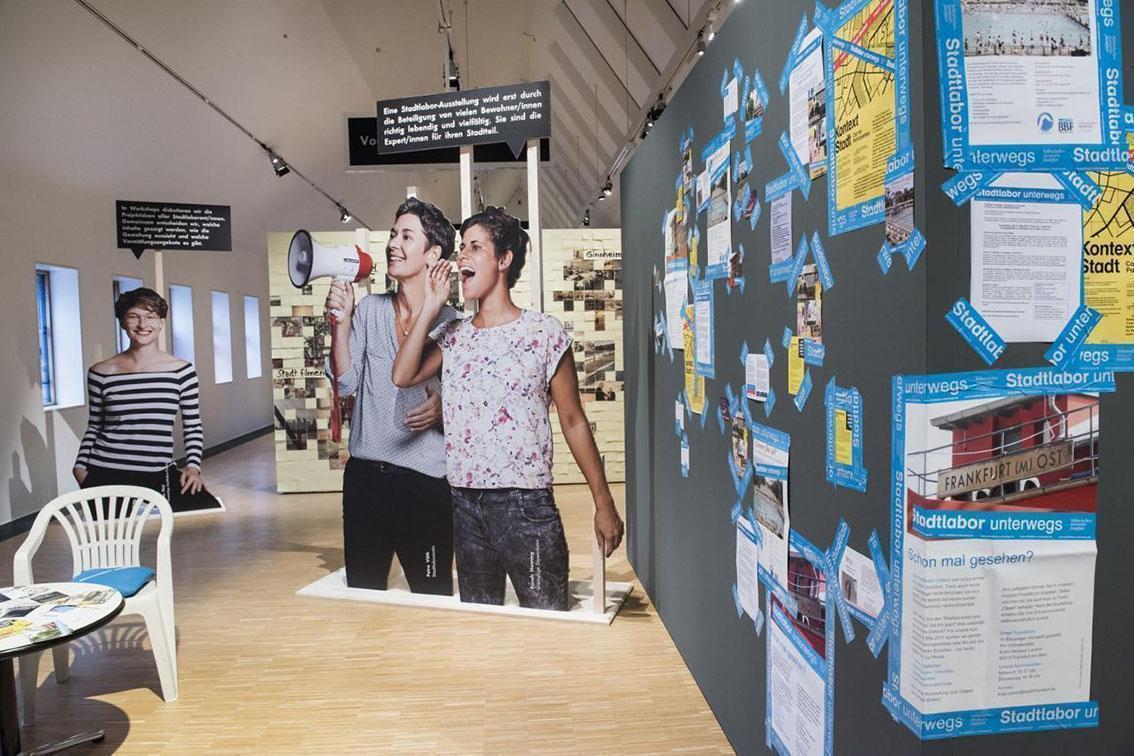Ostend 2011 - City Lab on the move
CityLab on the move in Ostend
30 April - 25 June 2011
How do residents and visitors experience Frankfurt’s Ostend? What connects them to the district? How was it in the past? And what will become of it? Because a museum alone cannot answer these questions, the CityLab has been on the move and invited those who wanted to contribute something – to these questions or any others – about the changes happening in Ostend and has created a unique exhibition with them.30 April - 25 June 2011
Over 100 people from the district and others who are active in the district for personal, artistic or scientific reasons turned their gaze to Ostend with their exhibition contributions. Residents, artists, local historians, retailers, youth workers, creative artists, gallerists, hobby and professional photographers, teachers, students of city planning and performance artists were just some of the participants, who showed their view on the neighborhood.
The exhibition brought together 38 contributions that showed individual perspectives on the Ostend and the changes taking place there and critically addressed the concomitants and consequences of change. They also reflected the great diversity of the Ostend's residents and "users" or presented various places and institutions in the neighborhood. The exhibition was on display in a 620-square-meter vacant office space on the edge of a harbor basin in Frankfurt's Osthafen.
Made and sponsored by
Other materials
Documentation
Projext blog
For more information on the project and exhibition location, please unfold the text:
Gentrification in Ostend
For some time, Ostend has been experiencing a process of upscaling whose origins can be attributed to more factors than simply the arrival of service companies on Hanauer Landstraße and the imminent move of the European Central Bank into the former wholesale market hall (Großmarkthalle). As early as the late 1980s, the Frankfurt city council decided to renovate selected areas and calm traffic, create relaxation and leisure spots, establish commercial and service companies and improve the social infrastructure. During these years, it was also an attractive place for art and cultures outside of the mainstream, the continuing development of which can now be seen in the settlement of galleries and advertising agencies. All these urban-planning developments increase the value of the old industrial district and lead to a social restructuring process, which led us to ask the question: How do people deal with the changes in the district, which also always mean personal movement and upheaval?CityLab on the move
For around six weeks, our mobile project office was a red and white striped construction trailer on Osthafenplatz at Hanauer Landstraße. In a place where the image of the district is constantly changing, it was also an eye-catcher in Ostend and a symbol of the transformation of the district. The mobile CityLab was open to exhibitors, inhabitants and passers-by working here on the exhibition and who were able to speak about the development of the lively district. It was also a collection point for personal memorabilia that had something to say about the characteristics of the district. Many loans, including photos, postcards with historical views, newspaper articles and unusual everyday items, found their way into the exhibition in this way.The Kontorhaus as an exhibition space
The exhibition was realised in Ostend in a large empty space measuring 620 square metres in an office building which was otherwise rented out. Known as the “Kontorhaus”, it was built in 2004 at the basin of the Osthafen and is a paradigm embodying the change of the district from a place of industry to a location for the services sector.Beyond Hanauer Landstraße
Inhabitants and those who know the district developed a district map to accompany the exhibition. They marked places that are significant in terms of architecture, social history, urban development, culture or industry. On the other hand, the makers also wanted to bring attention to the absurd and the humorous, as well as things that have evolved naturally. Because it is especially these aspects that define the character which is often overlooked in official depictions of Ostend. The six tours are intended as an offer: The marked places can also be explored outside of the suggested routes for new, wonderful and bizarre discoveries.District map as a download


